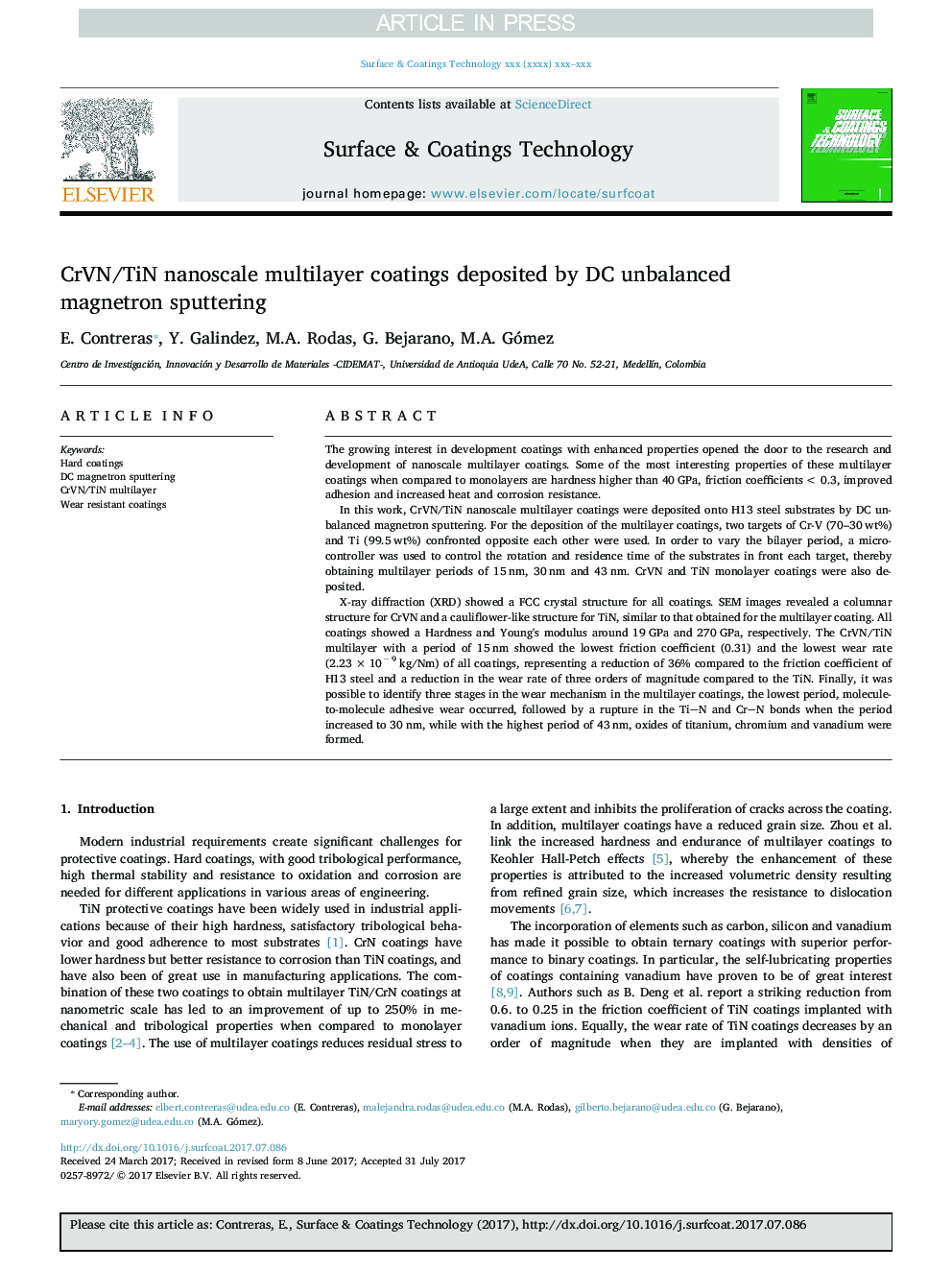| Article ID | Journal | Published Year | Pages | File Type |
|---|---|---|---|---|
| 8024736 | Surface and Coatings Technology | 2017 | 9 Pages |
Abstract
X-ray diffraction (XRD) showed a FCC crystal structure for all coatings. SEM images revealed a columnar structure for CrVN and a cauliflower-like structure for TiN, similar to that obtained for the multilayer coating. All coatings showed a Hardness and Young's modulus around 19 GPa and 270 GPa, respectively. The CrVN/TiN multilayer with a period of 15 nm showed the lowest friction coefficient (0.31) and the lowest wear rate (2.23 Ã 10â 9 kg/Nm) of all coatings, representing a reduction of 36% compared to the friction coefficient of H13 steel and a reduction in the wear rate of three orders of magnitude compared to the TiN. Finally, it was possible to identify three stages in the wear mechanism in the multilayer coatings, the lowest period, molecule-to-molecule adhesive wear occurred, followed by a rupture in the TiN and CrN bonds when the period increased to 30 nm, while with the highest period of 43 nm, oxides of titanium, chromium and vanadium were formed.
Related Topics
Physical Sciences and Engineering
Materials Science
Nanotechnology
Authors
E. Contreras, Y. Galindez, M.A. Rodas, G. Bejarano, M.A. Gómez,
